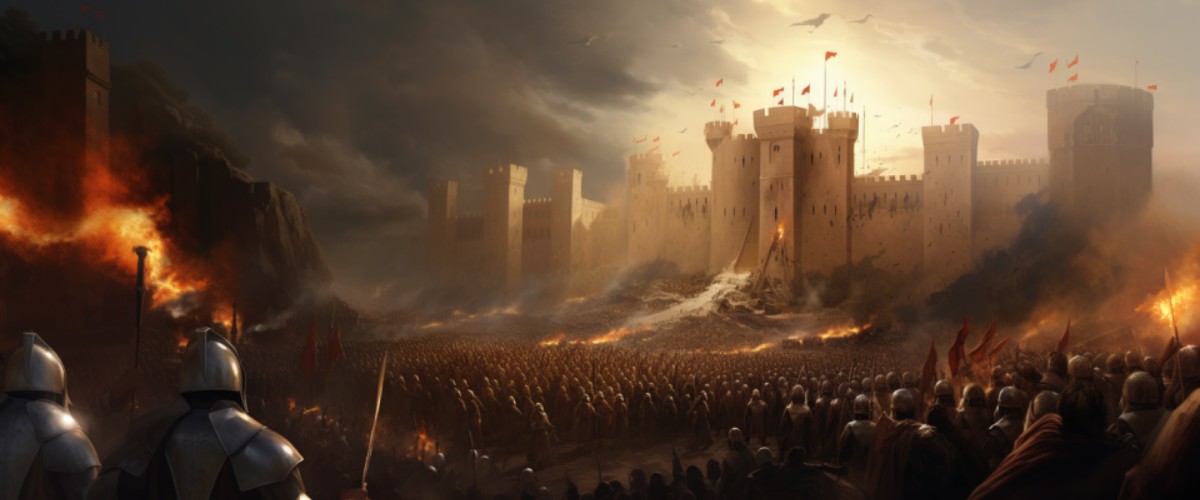The Crusades, spanning from 1095 to 1291, present a vivid tableau of medieval Europe and the Middle East embroiled in a series of religious wars. Grounded in zealous aspiration and territorial conquests, they intricately wove the tapestry of political, social, and religious upheavals across continents.
Background: Laying the Path to War
- Religious Zeal
- Rooted in the desire to reclaim the Holy Land (Jerusalem) from Muslim control.
- Pilgrims faced peril during journeys, necessitating secure passage through hostile territories.
- Political and Economic Factors
- European nobles sought lands and wealth, identifying the East as ripe for conquest.
- The Byzantine Empire, beleaguered by Seljuk Turks, sought assistance against encroaching forces.
- Key Entities
- Pope Urban II: Instigated the first Crusade with a call to arms in 1095.
- Saladin: Renowned Muslim leader who recaptured Jerusalem in 1187.
Major Happenings: A Chronology of Conflict
- The First Crusade (1096-1099)
- Led by European knights and nobility.
- Culminated in the conquest of Jerusalem in 1099.
- The Third Crusade (1189-1192)
- Initiated after Saladin recaptured Jerusalem.
- Brought forth iconic figures like Richard the Lionheart and Saladin.
- The Sack of Constantinople (1204)
- Crusaders diverged from their holy quest, devastating the Christian city of Constantinople.
- The Fall of Acre (1291)
- A critical defeat for the Crusaders and a turning point leading to their expulsion from the Holy Land.
Immediate Outcomes: Repercussions on Societies and Nations
- Shifts in Power Dynamics
- Altered relationships between European nations and prompted shifts in regional power.
- Cultural and Material Exchange
- Introduced Europeans to Eastern goods, ideas, and technologies.
- Persecution and Strife
- Local populations, including Jews and Eastern Christians, often faced persecution.
Long-term Impact: Shaping History and Humanity
- Technological and Intellectual Growth
- Interaction with the East stimulated intellectual developments and introduced novel technologies in Europe.
- Economic Evolution
- Established new trade routes and enhanced mercantile activities between East and West.
- Religious and Cultural Legacy
- Inflicted deep-seated animosities and mistrust among different religious and ethnic groups.
- Military Orders
- The birth and ascendancy of militaristic religious orders, such as the Knights Templar.
Conclusion: The Crusades in Historical Retrospect
The myriad facets of The Crusades embellish the annals of history with tales of valour, treachery, and profound cultural exchanges. Envisioning a confluence of faith, fervour, and ferocity, these expeditions molded socio-economic and political landscapes, immeasurably sculpting East-West interactions for centuries. While the moral and ethical dimensions of The Crusades have been intensely scrutinised, their undulating impacts continue to reverberate through contemporary international relations








